Grading Mint State Coins
Now we get to Mint State grading. The term Mint State (abbreviated as MS) is interchangeable with Uncirculated (UNC) to describe "new" coins showing no trace of wear. There are 11 grades of Mint State coins, ranging from MS-60 to MS-70.
Interpreting the Mint State coin grading scale can be confusing and is considered a greater challenge than grading circulated coins. Making matters more complex, even a point or two on the MS scale could easily mean thousands of dollars difference in trading value for certain coins.
If the art of grading Uncirculated coins seems like a hopeless cause, then you've landed in the right place. Here, Mint State grading is broken down into simpler terms and demystified. It's not as bad as it might seem. The bell has sounded so it's time to start class:
- Market Grading vs. Technical Grading
- Assigning a Numerical Mint State Grade
- Qualifiers for Mint State Grades
- Mint State Descriptions and Photos


Market Grading vs. Technical Grading
Most third-party graders and many other coin professionals employ market grading when assigning a numerical grade to a Mint State coin. That is, the assigned grade corresponds to what the coin is worth on the open marketplace, as reflected in industry price guides.
Because About Uncirculated coins are so close to Mint State, they are often market graded as well.
If this sounds confusing, you’re not alone, but keep reading and it just may all come together.
Market grading differs from technical grading, which assigns a grade based on the amount of measured wear a coin has received. Technical grading standards are usually applied when grading coins in Extremely Fine condition or lower. You can read more about technical grading in the Grading Circulated Coins section.
There are four primary attributes, or aspects, closely examined during market grading. They are contact marks, strength of strike, mint luster, and eye appeal. Taken altogether, they define a coin’s state of preservation.(1)
Within each of these attributes there is infinite variation, because no two coins are ever the same. In market grading, everything is judgmental and is far more subjective than technical grading. It’s no small wonder experience is so vital to accurately and consistently grade Mint State coins.
Contact marks, strength of strike, mint luster, and eye appeal will all be discussed in greater detail in the sub-headings below.
Why is market grading used?
In the eyes of many in our business, it just didn’t seem right that using technical grading, a Mint State coin graded lower than another Mint State coin could sell for more, so that’s why market grading was invented.
Example: A well-struck coin rated as MS-63 under technical grading standards (which is concerned primarily by the volume of contact marks) could normally sell for more in the current marketplace than a weakly struck same coin in MS-64 (but having fewer contact marks). With market grading, the well-struck coin could earn an MS-64 or MS-65 grade because of its superior value with buyers, while its weakly struck counterpart might be downgraded to MS-63.
Market grading is somewhat controversial because it is dependent on the current state of the marketplace, meaning the market grade of a coin could change over time.
Thankfully, the ANA has some fine videos illustrating how market grading and technical grading operate, so you can study this topic in greater detail.(2)(3)
Contact Marks
Of the four attributes, in the opinion of many, the most significant is contact marks, often spoken of in reference to surface preservation. According to one major third-party grading service, more than half the Mint State grade is dependent on how well the coin’s surface has avoided contact marks after being struck.(4)
One thing the U.S. Mint has never been known for is its careful handling of coins bound for regular circulation. Almost immediately upon being struck, a coin is subjected to contact marks, also called surface marks.
Contact marks occur when a coin clashes with other coins or hard objects while being roughly tossed around. Storage and transportation in large canvas bags or other containers filled with coins also promote contact marks.
Contact marks may manifest themselves as small nicks or severe scratches and gouges. The number and severity of contacts marks acquired by a coin is driven by random chance.
The term “bag marks” is often used interchangeably with contact marks, although in reality, bag marks is a narrower definition.
Market grading considers not only the number and severity of contact marks, but their location as well. Contact marks in focal areas, such as Miss Liberty’s cheek, are bad. Contact marks around the coin’s periphery or fields are not as easily observable and are less detracting.
Larger coins made of softer metals like silver or gold are more susceptible to contact marks.
No coin can earn a very high grade with harsh contact marks centered in its most highly visible areas, because discerning buyers tend to shun such coins.
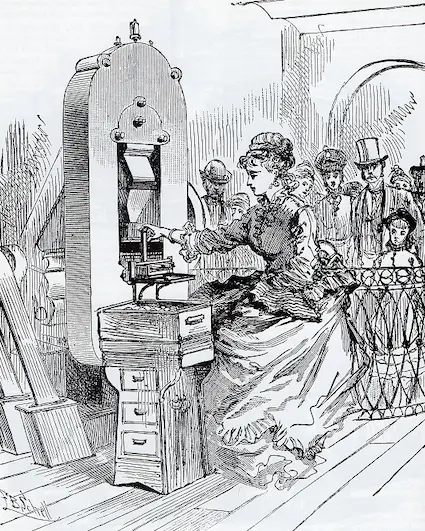
Of the four attributes, in the opinion of many, the most significant is contact marks, often spoken of in reference to surface preservation. According to one major third-party grading service, more than half the Mint State grade is dependent on how well the coin’s surface has avoided contact marks after being struck.(4)
One thing the U.S. Mint has never been known for is its careful handling of coins bound for regular circulation. Almost immediately upon being struck, a coin is subjected to contact marks, also called surface marks.
Contact marks occur when a coin clashes with other coins or hard objects while being roughly tossed around. Storage and transportation in large canvas bags or other containers filled with coins also promote contact marks.
Contact marks may manifest themselves as small nicks or severe scratches and gouges. The number and severity of contacts marks acquired by a coin is driven by random chance.
The term “bag marks” is often used interchangeably with contact marks, although in reality, bag marks is a narrower definition.
Market grading considers not only the number and severity of contact marks, but their location as well. Contact marks in focal areas, such as Miss Liberty’s cheek, are bad. Contact marks around the coin’s periphery or fields are not as easily observable and are less detracting.
Larger coins made of softer metals like silver or gold are more susceptible to contact marks.
No coin can earn a very high grade with harsh contact marks centered in its most highly visible areas, because discerning buyers tend to shun such coins.
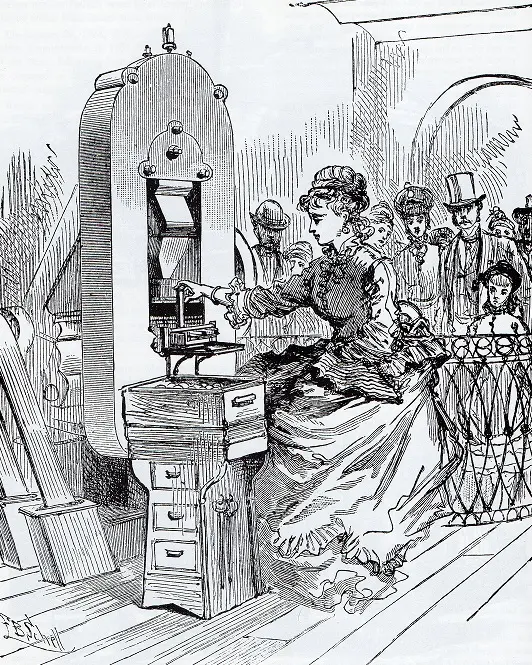
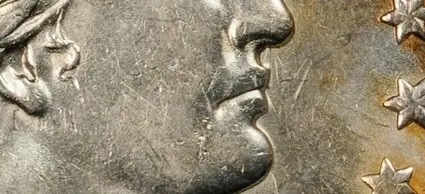
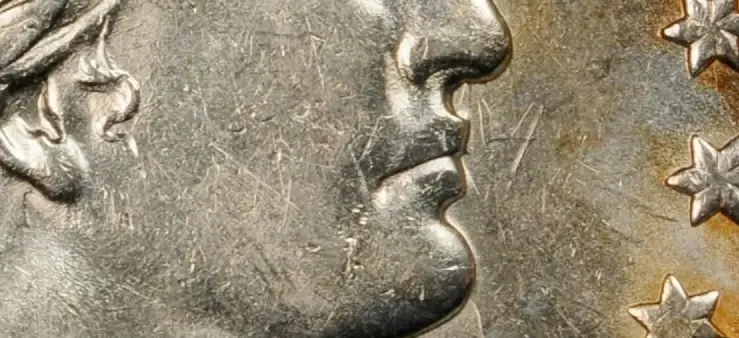
Surface preservation can be compromised after a coin leaves the Mint. Flaws caused by a variety of harmful activities may factor into a coin's market grading numerical placing as well.
Thin lines, scratches or other surface damage may be observed and are many times caused by improper abrasive cleaning or polishing by cloth. These detractors are called hairlines and are highly undesirable.
Improper cleaning may also occur in the form of chemical baths. Baths do not create hairlines, but attack the coin's surface in other ways, by causing artificial toning or impaired luster.

Surface preservation can be compromised after a coin leaves the Mint. Flaws caused by a variety of harmful activities may factor into a coin's market grading numerical placing as well.
Thin lines, scratches or other surface damage may be observed and are many times caused by improper abrasive cleaning or polishing by cloth. These detractors are called hairlines and are highly undesirable.
Improper cleaning may also occur in the form of chemical baths. Baths do not create hairlines, but attack the coin's surface in other ways, by causing artificial toning or impaired luster.

Surface preservation may be denigrated by other means, including something called cabinet friction. Generations ago, collectors displayed their coins in specialized cabinets. Whenever a drawer was opened or shut, the coins shuffled about, suffering miniscule, parallel surface scratches.
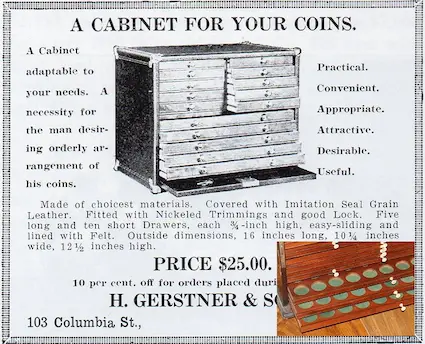
Surface preservation may be denigrated by other means, including something called cabinet friction. Generations ago, collectors displayed their coins in specialized cabinets. Whenever a drawer was opened or shut, the coins shuffled about, suffering miniscule, parallel surface scratches.
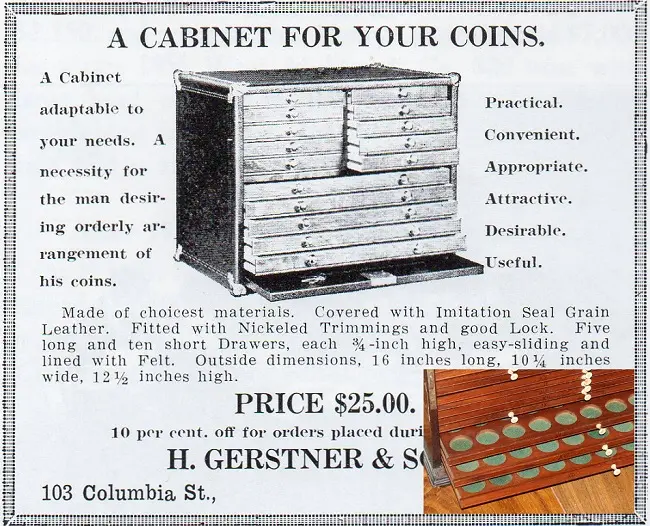
Back then, collectors weren’t as picky about condition as we are today, and their indiscretions are readily apparent under magnification to the astute grader.
Parallel scratches can also be traced to storage in coin albums where a clear plastic cover used to retain the coin in place was slid across the coin’s surface.
Strength of Strike
As many of you may know, a coin is made when a round, blank piece of metal (silver, for example) is placed between a pair of hardened steel dies and struck under high pressure. This action forces the softer metal of the blank to flow into the recesses of the dies, generating raised areas that form the design features of a coin.
When sharp, new dies are used and set up properly and the coining press is operating with sufficient pressure, the result is a beautiful coin displaying full detail, right down to the most delicate hair curl or eagle feather.
Some Mint State coins are weakly struck, resulting in some loss of detail at the high points. A weakly struck coin should not be confused with a coin having a slight amount of wear (more on this in a minute).
Manufacturing issues that may lead to a weakly struck coin are insufficient striking pressure, coining press set with too much spacing between upper and lower dies, or dies out of parallel in the horizontal plane. Worn dies can result in a similar loss of detail, even in an otherwise fully struck coin.
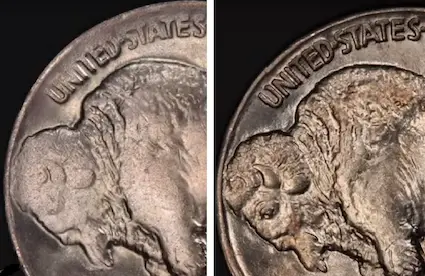
As many of you may know, a coin is made when a round, blank piece of metal (silver, for example) is placed between a pair of hardened steel dies and struck under high pressure. This action forces the softer metal of the blank to flow into the recesses of the dies, generating raised areas that form the design features of a coin.
When sharp, new dies are used and set up properly and the coining press is operating with sufficient pressure, the result is a beautiful coin displaying full detail, right down to the most delicate hair curl or eagle feather.
Some Mint State coins are weakly struck, resulting in some loss of detail at the high points. A weakly struck coin should not be confused with a coin having a slight amount of wear (more on this in a minute).
Manufacturing issues that may lead to a weakly struck coin are insufficient striking pressure, coining press set with too much spacing between upper and lower dies, or dies out of parallel in the horizontal plane. Worn dies can result in a similar loss of detail, even in an otherwise fully struck coin.
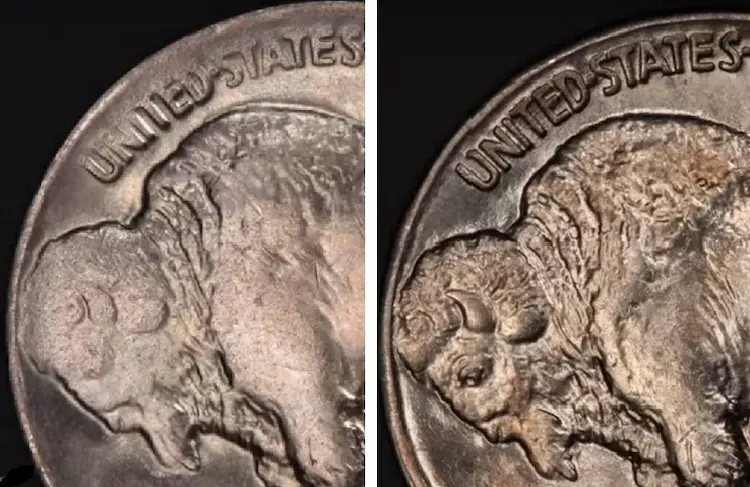
Strike weakness may be confused with elements of wear, but to the trained eye, the differences are usually discernible. Flatness in the highest details and lack of luster in those spots are the telltale signs of a coin exhibiting wear, not striking deficiencies.
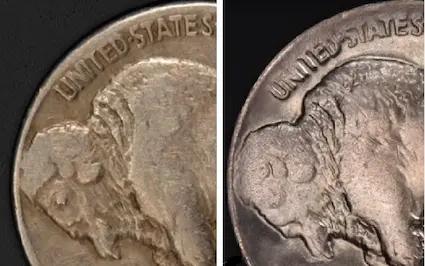
The range of strike weakness can deviate wildly. A Mint State coin may have full luster but lack many details of the design. Coins beset with poor strike quality are downgraded. Even with relatively few contact marks, such a coin can seldom rate above MS-62.(6)
On the other hand, a sharp, well struck coin displaying full detail is highly desirable to collectors and is usually awarded additional points on the MS market grading scale.
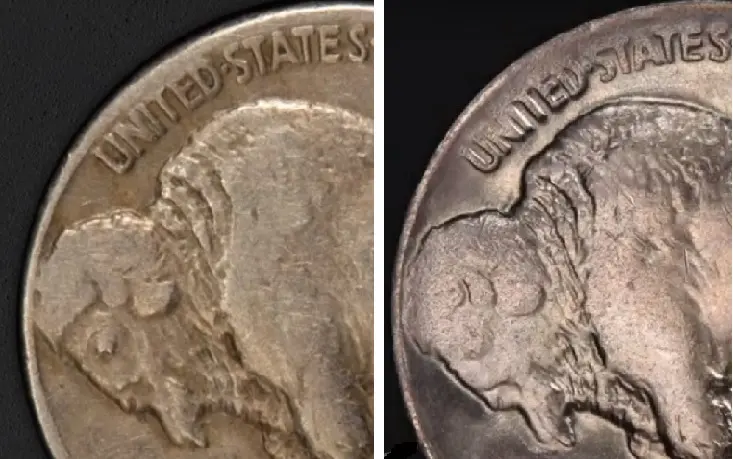
The range of strike weakness can deviate wildly. A Mint State coin may have full luster but lack many details of the design. Coins beset with poor strike quality are downgraded. Even with relatively few contact marks, such a coin can seldom rate above MS-62.(6)
On the other hand, a sharp, well struck coin displaying full detail is highly desirable to collectors and is usually awarded additional points on the MS market grading scale.
Mint Luster
Mint luster is the glossy sheen reflected from the surface of a coin. When a coin is struck under full pressure with relatively fresh, new dies, the metal flows smoothly and fully to form tiny, shallow stress lines with peaks and valleys emanating outward from the center of the coin. The reflection off these peaks and valleys is what creates the glossy sheen.
At the time of minting, the luster is at its strongest, but may fade over time, become discolored, or spotted. Once the luster is gone, it is gone forever. It can never truly be recreated.
A coin with brilliant mint luster may display a "cartwheel" effect.
This effect may be seen when the coin is rotated slowly under light, where the luster revolves like spokes of an imaginary wagon wheel.
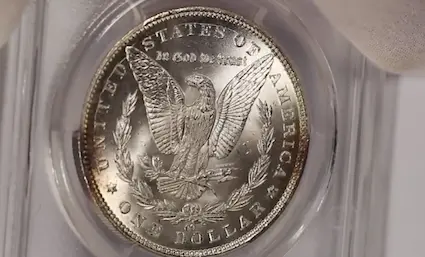
Mint luster is the glossy sheen reflected from the surface of a coin. When a coin is struck under full pressure with relatively fresh, new dies, the metal flows smoothly and fully to form tiny, shallow stress lines with peaks and valleys emanating outward from the center of the coin. The reflection off these peaks and valleys is what creates the glossy sheen.
At the time of minting, the luster is at its strongest, but may fade over time, become discolored, or spotted. Once the luster is gone, it is gone forever. It can never truly be recreated.
A coin with brilliant mint luster may display a "cartwheel" effect.
This effect may be seen when the coin is rotated slowly under light, where the luster revolves like spokes of an imaginary wagon wheel.
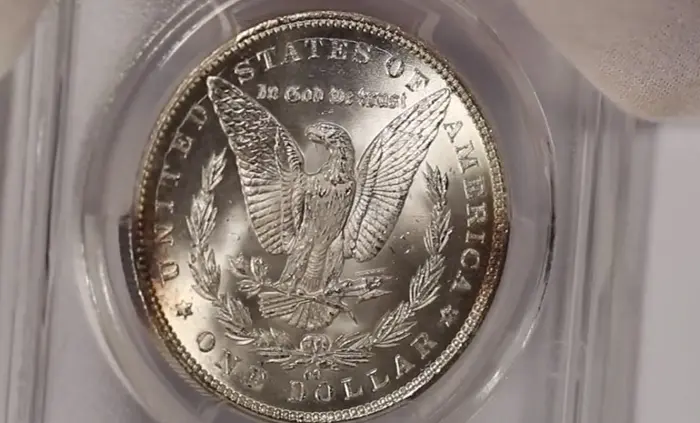
Poor striking pressure, worn dies, and undersized planchets impair metal flow and may contribute towards a dull, flat, or lifeless luster.
A coin with a lackluster appearance can never move very high on the MS scale with market grading. Usually, a poor or dull luster coin will rate no better than MS-63, even if other Mint State attributes are above average.(7)
As you might expect, a fantastic, "cartwheeling" original sheen can benefit a coin’s market grade because collectors compete fiercely for coins possessing this property.
Skilled pros seldom place a coin in the upper echelons of the MS scale (i.e. better than MS-65) without good or outstanding luster.
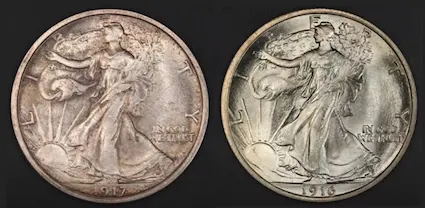
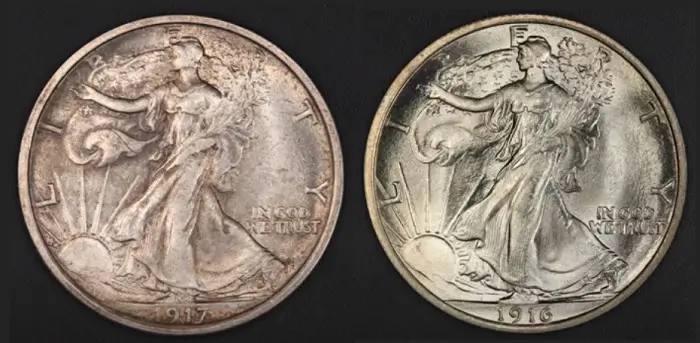
Eye Appeal
Eye appeal is defined as the overall appearance of a coin and is the attribute of Mint State grading involving the most guesswork. It is manifested by the random combination of contact marks, strength of strike, and mint luster. While we're at it, might as well throw in toning, too.
The subject of coin toning is highly opinionated. Some collectors appreciate attractive toning. But what is “attractive” toning? The old adage “Beauty is in the eye of the beholder” rings true here. Not everyone has the same thoughts on toning, although coins showing off vibrant, rainbow colors do seem to be very popular.
I myself have never been thrilled with rainbow toning, but perhaps I am out of step with the majority of collectors.
No one can say exactly for sure how to measure positive eye appeal, but most numismatists can generally agree if a given coin has fantastically positive eye appeal. More often than not, numismatists can agree on an "ugly" coin having negative eye appeal.
In market grading, a coin deemed to have poor eye appeal seldom rates higher than MS-62. On the other hand, a coin blessed with good or outstanding eye appeal will usually exceed an MS-65 grade.(8)
A factor as nebulous as eye appeal can bear a significant influence on the selling price of a particular coin. Sometimes the eye appeal factor is a close call, but many times it is easy to make a choice. Check out the photos below of 1885 Liberty Head nickels. All things are essentially equal between both coins, except... you guessed it... eye appeal. Which one would you prefer to own? The top or bottom one?
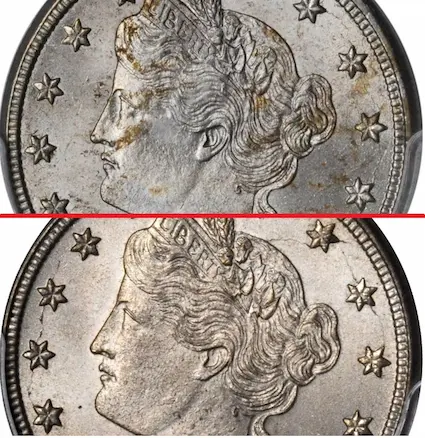
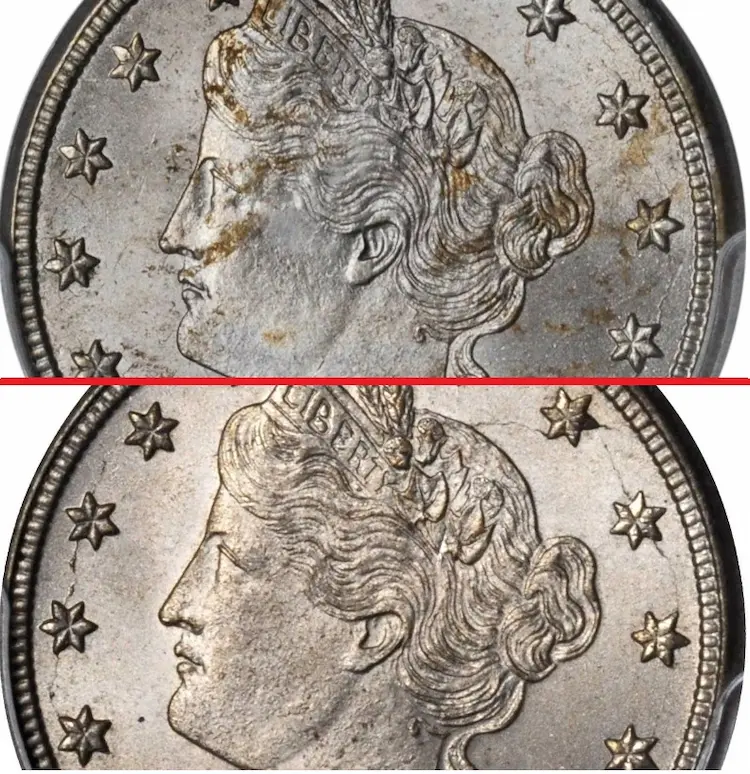
A coin with truly spectacular eye appeal can far exceed the selling price of the same coin with a “normal” appearance. Industry leaders understood greater specificity was needed in coin grading to address the wide separation of selling prices for coins at or very near the same grade. Just having a numerical grade was no longer good enough.
To that end, several special indicators were developed to further stratify coin quality over a very narrow spectrum (even within a single point on the grading scale). You can learn more about these special indicators in the Stars, “Green Beans”, and “Plus” Grading chapter.
For more details and examples of eye appeal comparisons, check out the Understanding Quality chapter.
Assigning a Numerical Mint State Grade
To properly grade a Mint State coin using the market grading approach, all these attributes are evaluated separately and combined to arrive at an overall MS-xx grade. In case you skipped over the market grading explanation, you can return to the top of this page to review.
How are the evaluations combined? How much does each attribute contribute toward the final grade? Here is how PCGS does it:(9)
- Surface Preservation (contact marks, hairlines, etc.) 60%
- Strike 15%
- Luster 15%
- Eye Appeal 10%
As you can see, assigning a numerical grade for a Mint State coin using market grading is a meticulous effort. Multiple aspects of the coin are closely scrutinized, judged, scored, and then finally fed into an unbalanced formulation to come up with the overall grade.
Sometimes even after all these factors are taken into consideration and a precision point grade is derived, it still is not enough, as we shall see in the next section.
Qualifiers for Mint State Grades
As you may agree by now, learning the basics of coin grading is a readily attainable goal. So far, so good! But just when you thought you were getting into the swing of things, here comes a curve ball in the ground rules of Mint State grading.
However, if you’re on base with everything covered so far, this pitch will resemble a slowly lobbed beach ball approaching home plate. With astonishing grace, you’ll blast it out of the park!

As you may agree by now, learning the basics of coin grading is a readily attainable goal. So far, so good! But just when you thought you were getting into the swing of things, here comes a curve ball in the ground rules of Mint State grading.
However, if you’re on base with everything covered so far, this pitch will resemble a slowly lobbed beach ball approaching home plate. With astonishing grace, you’ll blast it out of the park!

For a few coin types, just having a numerical Mint State grade does not impart enough information about the quality of the coin. In these situations, qualifiers, sometimes called designations, are attached to the point grade as a suffix.
Qualifiers provide additional information the marketplace has deemed to be of significance to collectors, and hence, has an impact on a coin’s value.
The qualifiers for Mint State coins are:
- Color
- Strike
- Surface Reflectivity
Color
Prior to 1965, United States coins consisted of alloys made primarily of copper, nickel, silver, and gold. Of these, copper is the most reactive to environmental conditions. Half cents and Large cents of 1793-1857 were composed theoretically of 100% copper, although impurities often found their way into the mix. Other copper-based coins that came later are technically classified as bronze, made of 95% copper, plus 5% tin and zinc.
When a copper coin is first minted, it usually boasts a brilliant red-orange hue (usually just called red by collectors). Think about how a brand-new penny shines. From the moment it is ejected from the coining press, it begins to oxidize in the atmosphere. Even if withheld from circulation, the coin generally takes on a brownish color over the years, after passing through a red-brown phase. Impurities in the copper can also hasten the color transformation to brown.
A relatively small number of collectible copper coins were stored in a way to preserve the original red mint color. Many others have only partially oxidized and possess a mixture of red and brown tinting. The majority are mostly brown.(10)
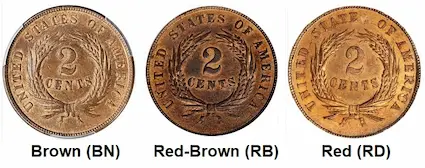
Prior to 1965, United States coins consisted of alloys made primarily of copper, nickel, silver, and gold. Of these, copper is the most reactive to environmental conditions. Half cents and Large cents of 1793-1857 were composed theoretically of 100% copper, although impurities often found their way into the mix. Other copper-based coins that came later are technically classified as bronze, made of 95% copper, plus 5% tin and zinc.
When a copper coin is first minted, it usually boasts a brilliant red-orange hue (usually just called red by collectors). Think about how a brand-new penny shines. From the moment it is ejected from the coining press, it begins to oxidize in the atmosphere. Even if withheld from circulation, the coin generally takes on a brownish color over the years, after passing through a red-brown phase. Impurities in the copper can also hasten the color transformation to brown.
A relatively small number of collectible copper coins were stored in a way to preserve the original red mint color. Many others have only partially oxidized and possess a mixture of red and brown tinting. The majority are mostly brown.(10)
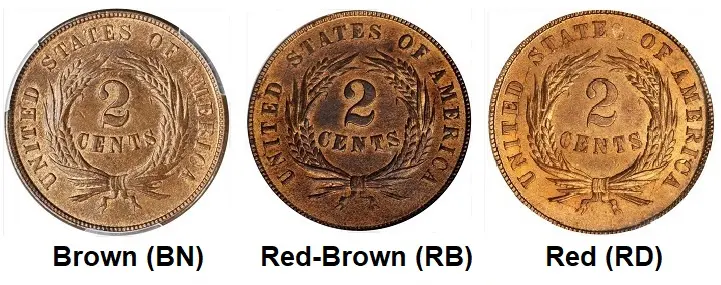
Collectors prize copper and bronze coins that have retained their original full glory mint color. Coins meeting this qualification from the early years of the U.S. Mint are exceedingly rare. Red-brown examples are held in less esteem, but rank above their more common brown counterparts. Market prices reflect these preferences, sometimes dramatically.
Because of the importance placed on copper coloration, three color ratings (i.e., qualifiers) are attached to Mint State grades (and Proofs too, but we're not there yet) involving copper-based coins. They are: Red (abbreviated RD), Red-Brown (RB), and Brown (BN).
Here is how PCGS assigns the color qualifier:
- Red (RD) Must display 95% or more of original color
- Red-brown (RB) Must display between 5-95% or original color
- Brown (BN) Displays less than 5% of original color
NGC assesses color along 85+% (RD), 15-85% (RB), and 0-15% (BN) guidelines.
For example, let’s say you submit to PCGS a stunning uncirculated 1872 Indian Head cent retaining nearly all of its original mint state color. You might get it back with a grade looking like this: MS-65 RD. Congratulations! The RD qualifier places your coin in the highest color category, and with that, a substantial premium in value, worth in the neighborhood of $15,000.(11) Contrast that to an 1872 MS-65 BN: It might garner just one-sixth that amount.
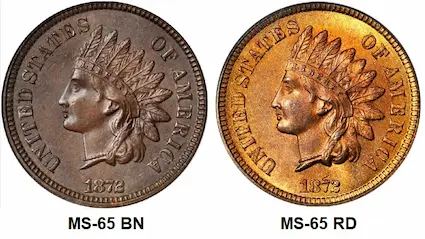
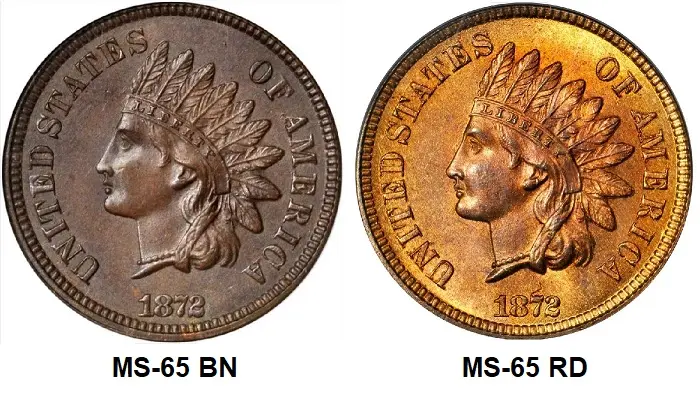
Strike
Didn’t we already cover this? Wasn’t strike one of the four key attributes examined in grading Mint State coins? Yes, and Yes. It turns out that strike is also a qualifier for a small number of coin types.
As a reminder, a strike resulting in weakly defined details can be caused by worn dies, insufficient striking pressure, or both.
For these coin types, there may be a suffix added to the numerical grade to indicate the level of strike detail present at a particular spot on the coin. Currently, these strike qualifiers are used by both PCGS and NGC when merited:
- Full Steps (FS) Jefferson nickel -- At least five of the six Monticello steps fully defined, uninterrupted:
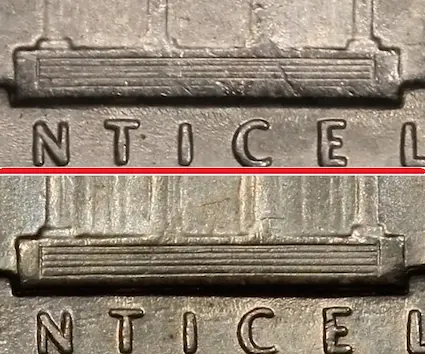
Didn’t we already cover this? Wasn’t strike one of the four key attributes examined in grading Mint State coins? Yes, and Yes. It turns out that strike is also a qualifier for a small number of coin types.
As a reminder, a strike resulting in weakly defined details can be caused by worn dies, insufficient striking pressure, or both.
For these coin types, there may be a suffix added to the numerical grade to indicate the level of strike detail present at a particular spot on the coin. Currently, these strike qualifiers are used by both PCGS and NGC when merited:
- Full Steps (FS) Jefferson nickel -- At least five of the six Monticello steps fully defined, uninterrupted:
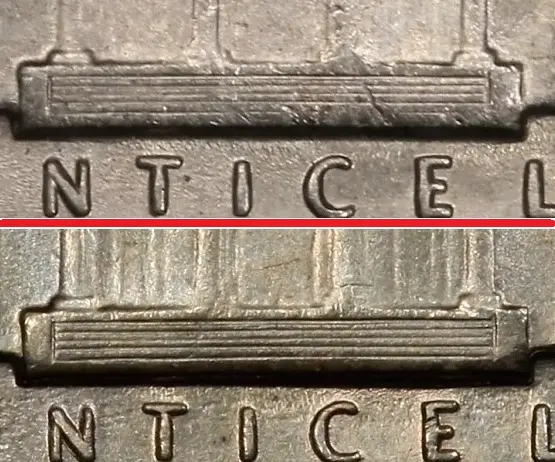
- Full Bands (FB) Mercury dimes -- The central horizontal bands on the reverse fasces are fully separated and uninterrupted:
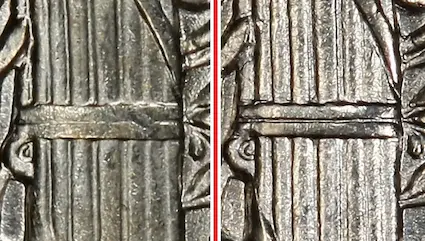
- Full Bands (FB) Mercury dimes -- The central horizontal bands on the reverse fasces are fully separated and uninterrupted:
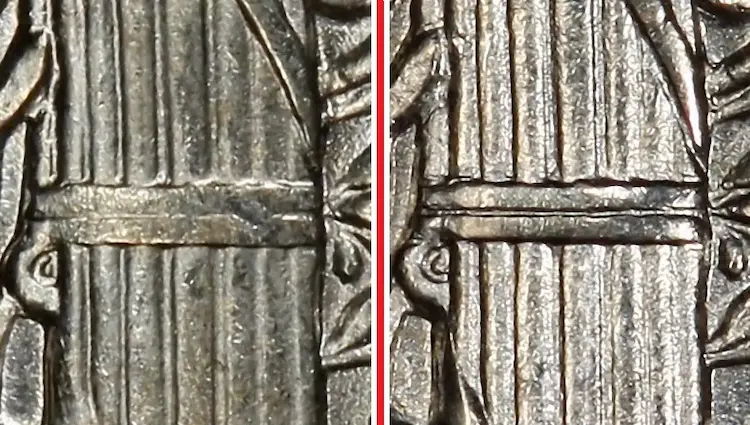
- Full Bands (FB) Roosevelt dimes -- The pair of horizontal bands on the reverse torch are fully separated and uninterrupted. The term Full Torch (abbreviation FT) is sometimes used to differentiate between Mercury and Roosevelt dimes for the full band effect.
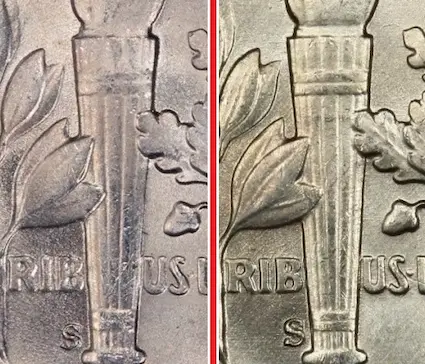
- Full Bands (FB) Roosevelt dimes -- The pair of horizontal bands on the reverse torch are fully separated and uninterrupted. The term Full Torch (abbreviation FT) is sometimes used to differentiate between Mercury and Roosevelt dimes for the full band effect.
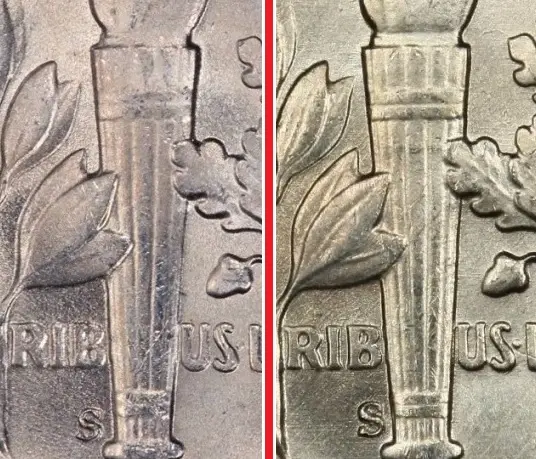
- Full Head (FH) Standing Liberty quarters -- Liberty’s head displays full detail, including cap, hair, group of three leaves, and facial features. This is for a Type 2 Standing Liberty quarter.
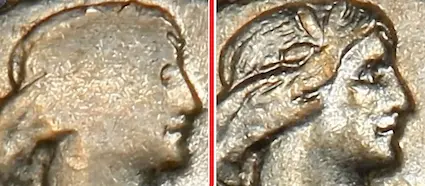
- Full Head (FH) Standing Liberty quarters -- Liberty’s head displays full detail, including cap, hair, group of three leaves, and facial features. This is for a Type 2 Standing Liberty quarter.
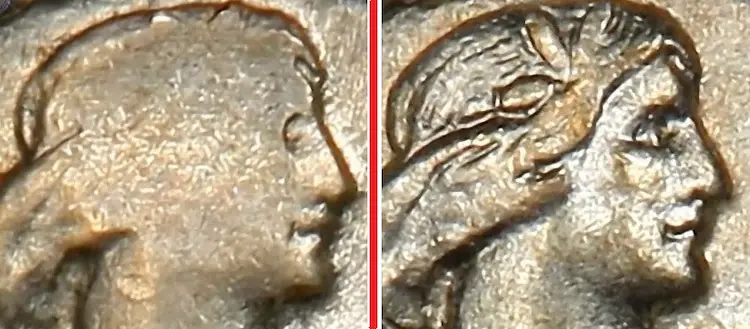
- Full Bell Lines (FBL) Franklin half dollars -- The lines going across bottom of Liberty Bell are complete and uninterrupted:
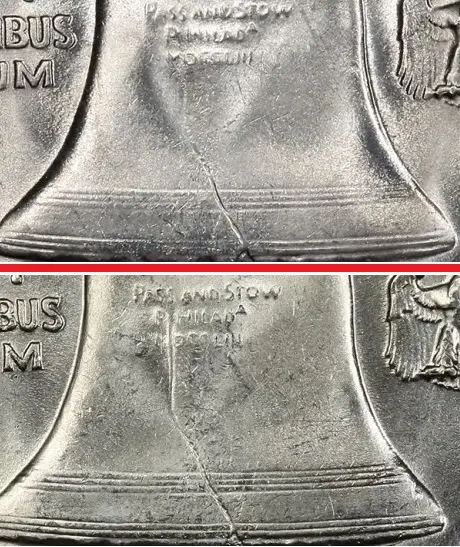
No surprise here, but a strike qualifier can add significantly to the value of a coin. For example, a 1928 Standing Liberty quarter grading MS-65 FH retails easily for over $1500.(12) Without the FH qualifier, a seller would be lucky to get one-third that amount.
It seems odd that just five coin types are using the strike qualifier attached to the numerical grade. For all other U.S. coins, there are no grade suffixes to call attention to the coin’s strike sharpness.
For now, this is where the marketplace has landed. In reality, all collectible coins are subject to weak or bold strikes and everything in between. As we learned earlier, the strength of strike is a component in the market grading of Mint State coins, but does not get directly mentioned in the assigned grade, unless they are Jefferson nickels, Mercury dimes, Roosevelt dimes, Standing Liberty quarters, or Franklin half dollars.
As the art of coin grading continues to evolve, perhaps someday we’ll see a much broader use of the strike qualifier in grade assignments.(13)
Surface Reflectivity
A coin is said to have surface reflectivity when its fields display highly reflective, mirror-like properties. The term “field” describes the open area, (i.e. the background) on a coin's surface not occupied by the devices (raised portion of the design -- portrait, eagle, lettering, etc.).
A Mint State coin with good surface reflectivity somewhat resembles a Proof issue, but must not be confused with a Proof (we still haven't gotten to Proof coins, have we?).
There are two surface reflectivity qualifiers commonly used today by PCGS for Mint State coins:(14)
- Proof-like (PL) Morgan dollars -- Fields will display clear reflection at a distance of 2-4 inches.
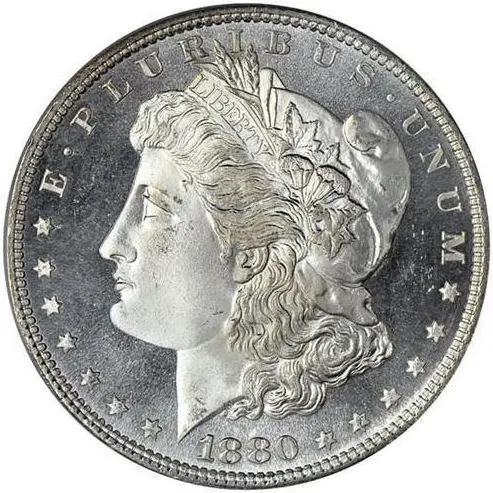
- Deep Mirror Proof-like (DMPL) Morgan dollars -- Fields will display clear reflection at a distance of 6 inches. DMPL is pronounced “Dimple” in numismatic lingo.
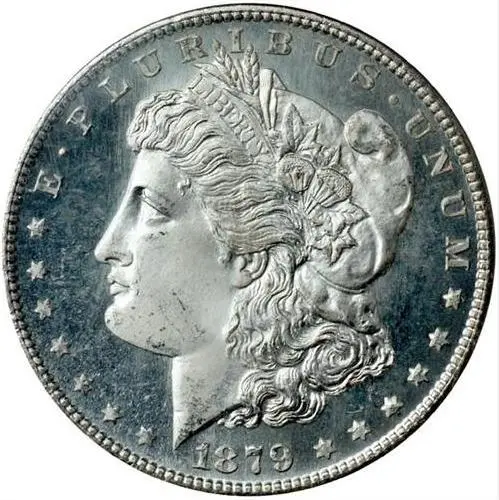
The reflective distances of 2-4 inches and 6 inches are somewhat arbitrary, but act as a rough guideline on how to judge reflectivity.
For PCGS, Morgan dollars are the only coins where the PL or DMPL qualifiers are suffixed to the numerical grade. Marketplace activity has driven this because for Mint State Morgan dollars, surface reflectivity is a very desirable trait with collectors.
NGC differs from PCGS because they build into their grading labels the abbreviations PL (for proof-like) and DPL (for deep proof-like -- equivalent to DMPL) for Mint State coin types other than just Morgan dollars.
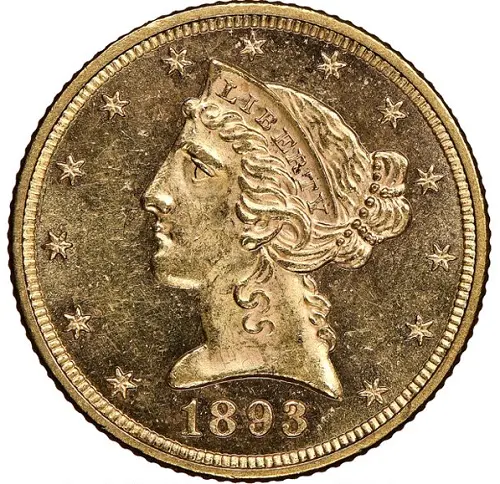
Coins with reflective surfaces are a challenge to photograph in a way to capture the essence of their mirror-like qualities, proving once again there is no substitute for in-person examination.
Videos, however, may be a bit better at illustrating the differences between brilliant luster (but with no reflectivity), proof-like (PL) and deep mirror proof-like (DMPL). The Coin Geek guy shot this brief video breaking down the various reflective properties. When a coin is slowly moved around under proper lighting, the reflective properties are more easily observable.
PL and DMPL Morgans (and other coin types) were created when dies that had been recently polished and smoothed were put into service. For a relatively few number of strikes, the coins had mirrored, proof-like qualities, thanks to the smoothness of the dies. Before long, the reflectivity returned to normal luster as the dies wore and became less smooth. This explains why PL and DMPL dollars are but a diminutive fraction of the Morgan dollar Mint State population.
As the proof-like qualities faded away, subsequent strikes resulted in highly lustrous coins having the aforementioned desirable cartwheel effect. With continued usage, the dies soon experienced additional wear, resulting in coins with diminished luster, defining the vast majority of coin population.
Thus, if you have an MS-65 Morgan dollar displaying reflective fields at a distance of six inches, it may well be rewarded with a grade of MS-65 DMPL. For most Morgan dollar dates, the DMPL designation carries a substantial premium.
Mint State Descriptions and Photos
Whew! The prerequisites are finally behind us. Now that we’ve touched on the primary attributes of market grading, numeric grade assignation, and qualifiers of Mint State coins, we're ready to see some descriptions and photo examples.
The grades, descriptions, and photos below provide a generalized view how Mint State business strike coins are evaluated, starting at MS-70, where there is nothing but virtual perfection across the board in all aspects, and moving down toward the MS-60 bottom where the coin is officially uncirculated, but with many flaws. The grades and descriptions are taken directly from the ANA’s official grading standards publication.(15) All photos are courtesy of PCGS.
If you're reading this on your mobile device you should be able to zoom in on any of the pics for a closer look. If on a desktop or laptop, just hover above an image and you will get a chance to click to a larger image (then hit the back button to get back to this page)
| Mint State-70 | MS-70 | The perfect coin. Has very attractive sharp strike and original luster of the highest quality for the date and mint. No contact marks are visible under magnification. There are not noticeable hairlines, scuff marks, or defects. Eye appeal is attractive and outstanding. If copper, the coin is bright, with full original color and luster. Note: Neither PCGS or NGC has every graded a Morgan dollar in MS-70, so we are using a modern coin to illustrate the MS-70 grade.
|
| Mint State-69 | MS-69 | Has very attractive sharp strike and full original luster for the date and mint, with no more than two small non-detracting contact marks or flaws, No hairlines or scuff marks can be seen. Has exceptional eye appeal. If copper, the coin is bright, with original color and luster.
|
| Mint State-68 | MS-68 | Has attractive sharp strike and full original luster for the date and mint, with no more than four light scattered contract marks or flaws. No hairlines or scuff marks shows. Has exceptional eye appeal. If copper, the coin is lustrous and has original color.
|
| Mint State-67 | MS-67 | Has original luster and normal strike for date and mint. May have three or four very small contact marks and one more noticeable but not detracting mark. On comparable coins, one or two small single hairlines may show, or one or two minor scuff marks or flaws may be present. Eye appeal is above average. If copper, the coin has luster and original color.
|
| Mint State-66 | MS-66 | Has above average quality of surface and mint luster, with no more than three or four minor or noticeable contact marks. A few light hairlines may show under magnification, or there may be one or two light scuff marks showing. Eye appeal is above average and very pleasing for the date and mint. If copper, the coin displays original or lightly toned color, which must be designated.
|
| Mint State-65 | MS-65 | Shows an attractive high quality of luster and strike for the date and mint. May have a few small scattered contact marks, or two larger marks may be present. One or two small patches of hairlines may show. Noticeable light scuff marks may be seen on the high points of the design. Overall quality is above average and eye appeal is very pleasing. If copper, the coin has some attractive luster with original or darkened color, as designated.
|
| Mint State-64 | MS-64 | Has at least average luster and strike for the type. Several small contact marks in groups, as well as one or two moderately heavy marks may be present. One or two small patches of hairlines may show. Noticeable light scuff marks or defects might be seen within the design or in the field. Overall quality is attractive, with a pleasing eye appeal. If copper, the coin may be slightly dull. Color should be designated.
|
| Mint State-63 | MS-63 | Mint luster may be slightly impaired. Numerous small contact marks and a few scattered heavy marks may be seen. Small hairlines may be visible without magnification. Several detracting scuff marks or defects may be present throughout the design or in the fields. The general quality is about average, but overall, the coin is rather attractive. Copper pieces may be darkened or dull. Color should be designated.
|
| Mint State-62 | MS-62 | An impaired or dull luster may be evident. Clusters of small marks may be present throughout with a few large marks or nicks in prime focal areas. Hairlines may be very noticeable. Large, unattractive scuff marks might be seen on major features. The strike, rim, and planchet quality may be noticeably below average. Overall eye appeal is below average. If copper, the coin will show a diminished color and tone.
|
| Mint State-61 | MS-61 | Mint luster may be diminished or noticeably impaired, and the surface may have clusters of large and small contact marks throughout. Hairlines could be very noticeable. Scuff marks may show as unattractive patches on large areas or major features. Small rim nicks and striking or planchet defects may show, and the quality may be noticeably poor. Eye appeal is somewhat unattractive. Copper pieces will be generally dull, dark, and possibly spotted.
|
| Mint State-60 | MS-60 | Unattractive, dull, or washed-out mint luster may mark this coin. There may be many large, detracting contact marks, or damage spots, but no trace of circulation wear. There could be a heavy concentration of hairlines, or unattractive large areas of scuff marks. Rim nicks may be present, and eye appeal is very poor. Copper coins may be dark, dull, and spotted.
|
- Surface Preservation: No contact marks or hairlines show under magnification.
- Luster: Very attractive. Fully original.
- Eye Appeal: Outstanding.

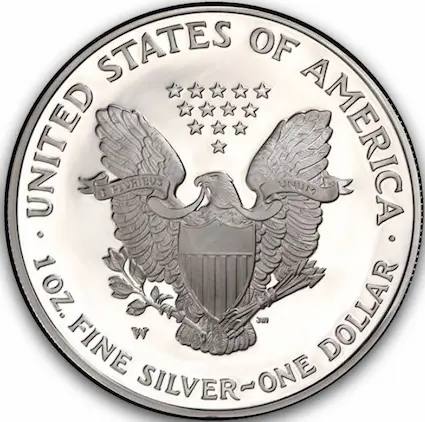
- Surface Preservation: One or two minuscule contact marks, none in prime focal areas. No visible hairlines.
- Luster: Very attractive. Fully original.
- Eye Appeal: Exceptional.

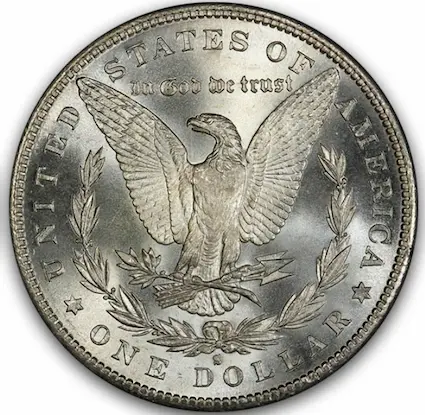
- Surface Preservation: Three or four contact marks, none in prime focal areas. No hairlines visible.
- Luster: Fully original.
- Eye Appeal: Exceptional.
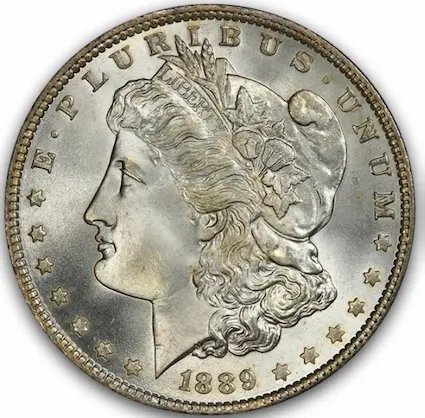
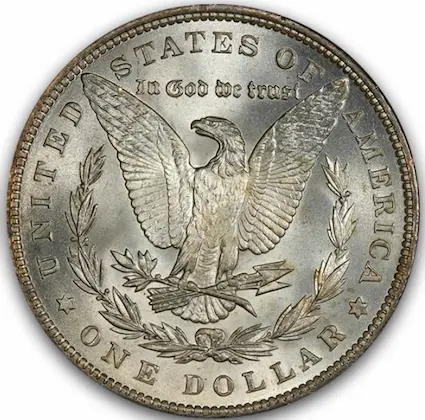
- Surface Preservation: Three or four , one or two may be in prime focal areas. No visible hairlines without magnification.
- Luster: Above average. Nearly full original.
- Eye Appeal: Exceptional.

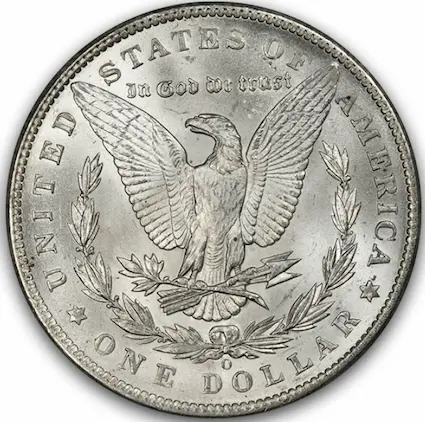
- Surface Preservation: Several small contact marks; a few may be in prime focal areas. No hairlines visible without magnification.
- Luster: Above average. Fully original.
- Eye Appeal: Above average.
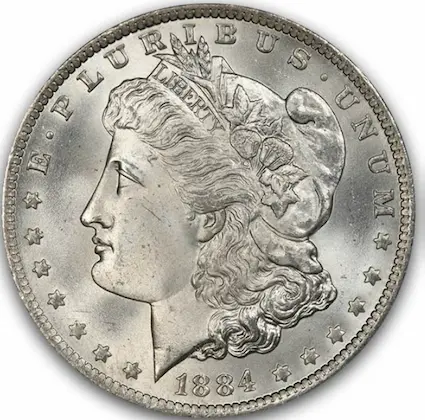
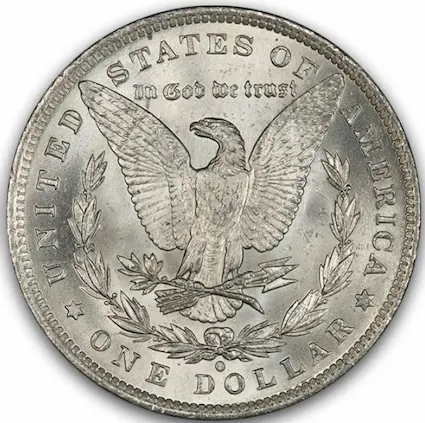
- Surface Preservation: Light and scattered contact marks without major distracting marks in prime focal area. May have a few scattered hairlines.
- Luster: Above average. Fully original.
- Eye Appeal: Very pleasing.
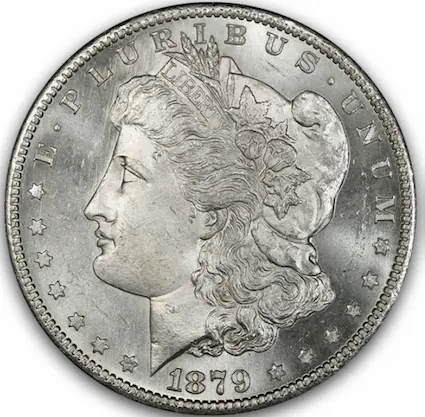
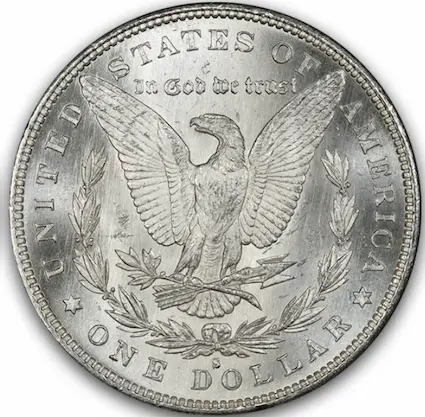
- Surface Preservation: May have light scattered contact marks; a few may be in prime focal areas. May have a few scattered hairlines or a small patch.
- Luster: Average.
- Eye Appeal: Quite attractive.
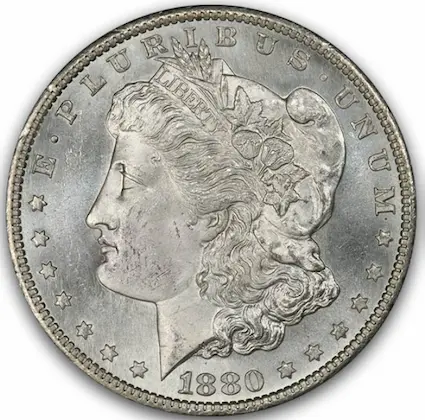
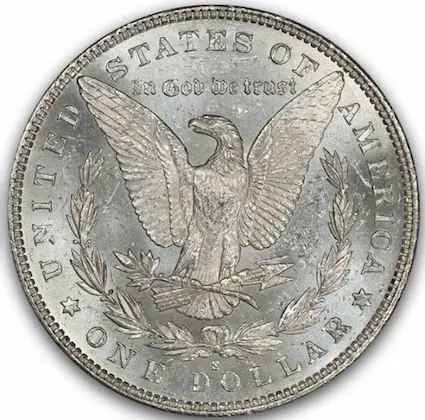
- Surface Preservation: May have distracting contact marks in prime focal areas. May have a few scattered hairlines or a small patch.
- Luster: May be slightly impaired.
- Eye Appeal: Rather attractive.
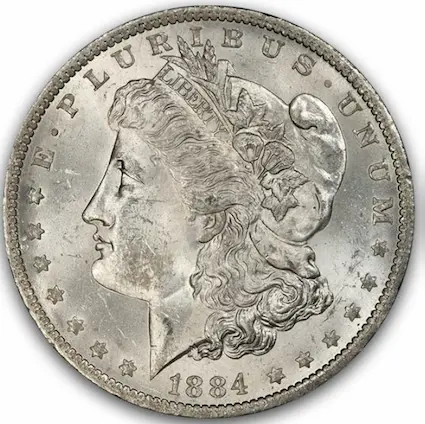
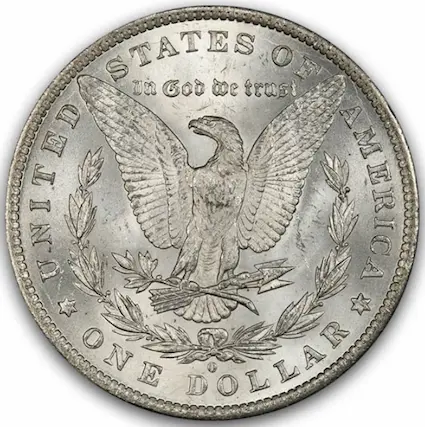
- Surface Preservation: May have distracting contact marks in prime focal areas and/or secondary areas. May have a few scattered hairlines or a noticeable patch.
- Luster: May be somewhat impaired.
- Eye Appeal: Generally acceptable.
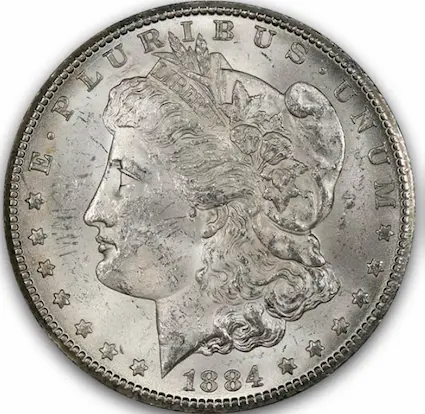
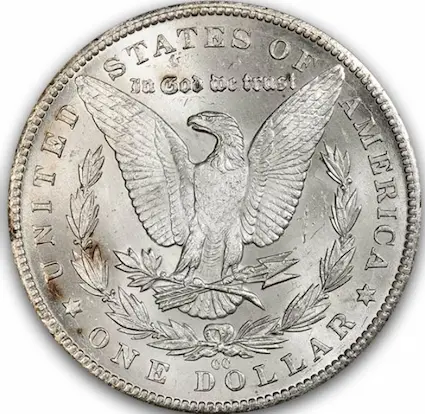
- Surface Preservation: May have a few heavy (or numerous light) contact marks in prime focal areas and/or secondary areas. May have a noticeable patch of hairlines or continuous hairlining over surfaces.
- Luster: May be impaired.
- Eye Appeal: Unattractive.
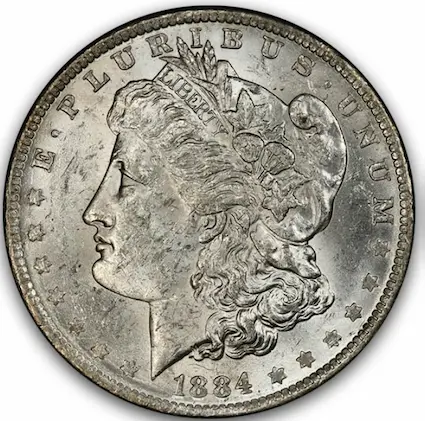
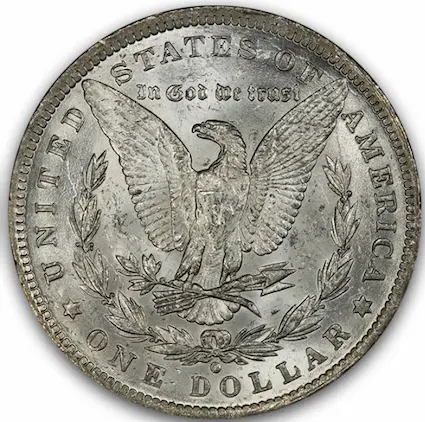
- Surface Preservation: May have heavy contact marks in all areas. May have noticeable hairline patch or continuous hairlining overall.
- Luster: Often impaired.
- Eye Appeal: Poor.
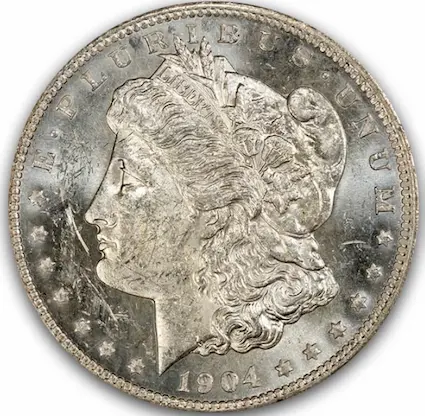
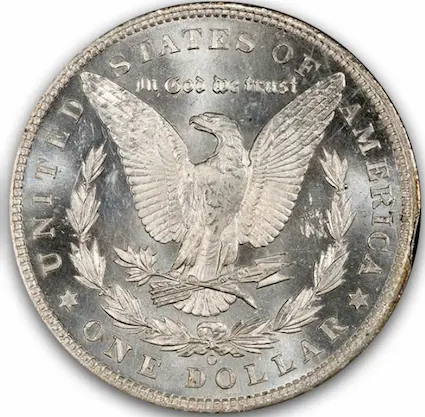
Quick Links to Other Coin Grading Chapters...
The next chapter in this section is Proof Coins.
Use the links directly below to navigate the "What is Coin Grading?" section:
- The Coin Grader Progression: From Boogeyman to Super Hero
- Grading Circulated Coins
- Mint State Coins (the current chapter)
- Proof Coins
- Stars, "Green Beans", and "Plus" Grading
- Grades as Reported on Rare Coins 101
- Suggested Coin Grading References
All the chapters referenced above are accessible from any other chapter this section. Thus, no need to return to this Introductory page to link to other chapters.
Sources
1. American Numismatic Association. Fundamental Grading Theory.
2. American Numismatic Association. Fundamental Grading Theory.
3. American Numismatic Association. Technical Grading VS Market Grading.
4. Professional Coin Grading Service (PCGS).
5. Q. David Bowers. The History of United States Coinage. Los Angeles, CA. Bowers & Ruddy Galleries, Inc. 1979.
6. PCGS.
7. PCGS.
8. PCGS.
9. PCGS.
10. Bressett, Kenneth, and Bowers, Q. David. The Official American Numismatic Association Grading Standards for United States Coins, 7th ed. Pelham, AL. Whitman Publishing, 2019.
11. Gilkes, Paul, Senior Editor, U.S. Coins. Coin World Domestic Values. Sidney, OH. Amos Media Company. 2024.
12. Gilkes, Coin World Domestic Values.
13. Bressett and Bowers, ANA Grading Standards.
14. PCGS.
15. Bressett and Bowers, ANA Grading Standards.
As an Amazon Affiliate I earn from qualifying purchases, at no added cost to you. Thank you!























